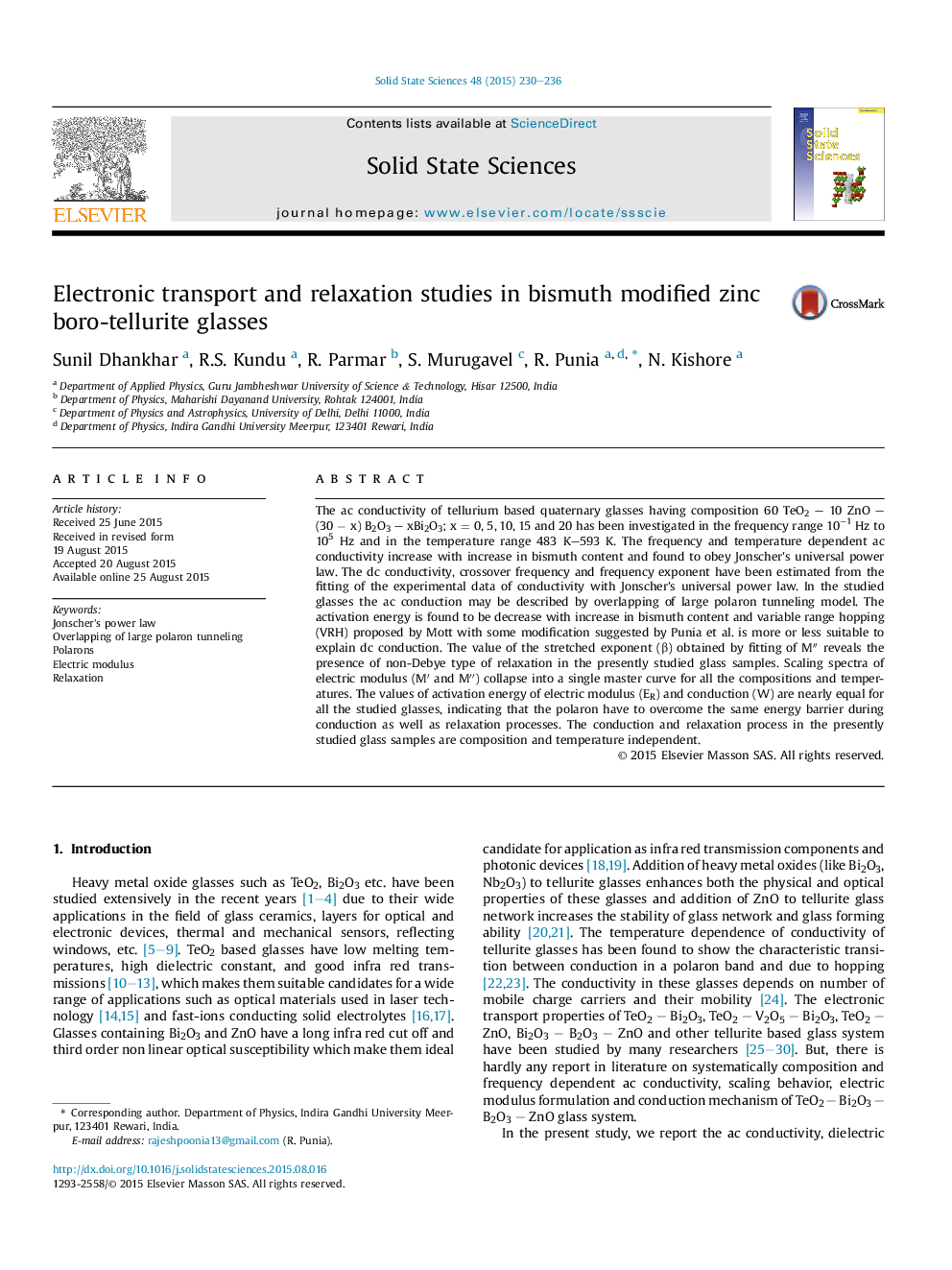| کد مقاله | کد نشریه | سال انتشار | مقاله انگلیسی | نسخه تمام متن |
|---|---|---|---|---|
| 1504156 | 1510974 | 2015 | 7 صفحه PDF | دانلود رایگان |
• The ac conductivity found to obey Jonscher's universal power law.
• The ac conduction takes place via tunneling of overlapping large polaron (OLPT).
• DC conduction takes place via variable range hopping.
• Non-Debye type of relaxation process prevails in the studied glasses.
The ac conductivity of tellurium based quaternary glasses having composition 60 TeO2 – 10 ZnO – (30 − x) B2O3 – xBi2O3; x = 0, 5, 10, 15 and 20 has been investigated in the frequency range 10−1 Hz to 105 Hz and in the temperature range 483 K–593 K. The frequency and temperature dependent ac conductivity increase with increase in bismuth content and found to obey Jonscher's universal power law. The dc conductivity, crossover frequency and frequency exponent have been estimated from the fitting of the experimental data of conductivity with Jonscher's universal power law. In the studied glasses the ac conduction may be described by overlapping of large polaron tunneling model. The activation energy is found to be decrease with increase in bismuth content and variable range hopping (VRH) proposed by Mott with some modification suggested by Punia et al. is more or less suitable to explain dc conduction. The value of the stretched exponent (β) obtained by fitting of M″ reveals the presence of non-Debye type of relaxation in the presently studied glass samples. Scaling spectra of electric modulus (M′ and M″) collapse into a single master curve for all the compositions and temperatures. The values of activation energy of electric modulus (ER) and conduction (W) are nearly equal for all the studied glasses, indicating that the polaron have to overcome the same energy barrier during conduction as well as relaxation processes. The conduction and relaxation process in the presently studied glass samples are composition and temperature independent.
Figure optionsDownload as PowerPoint slide
Journal: Solid State Sciences - Volume 48, October 2015, Pages 230–236
